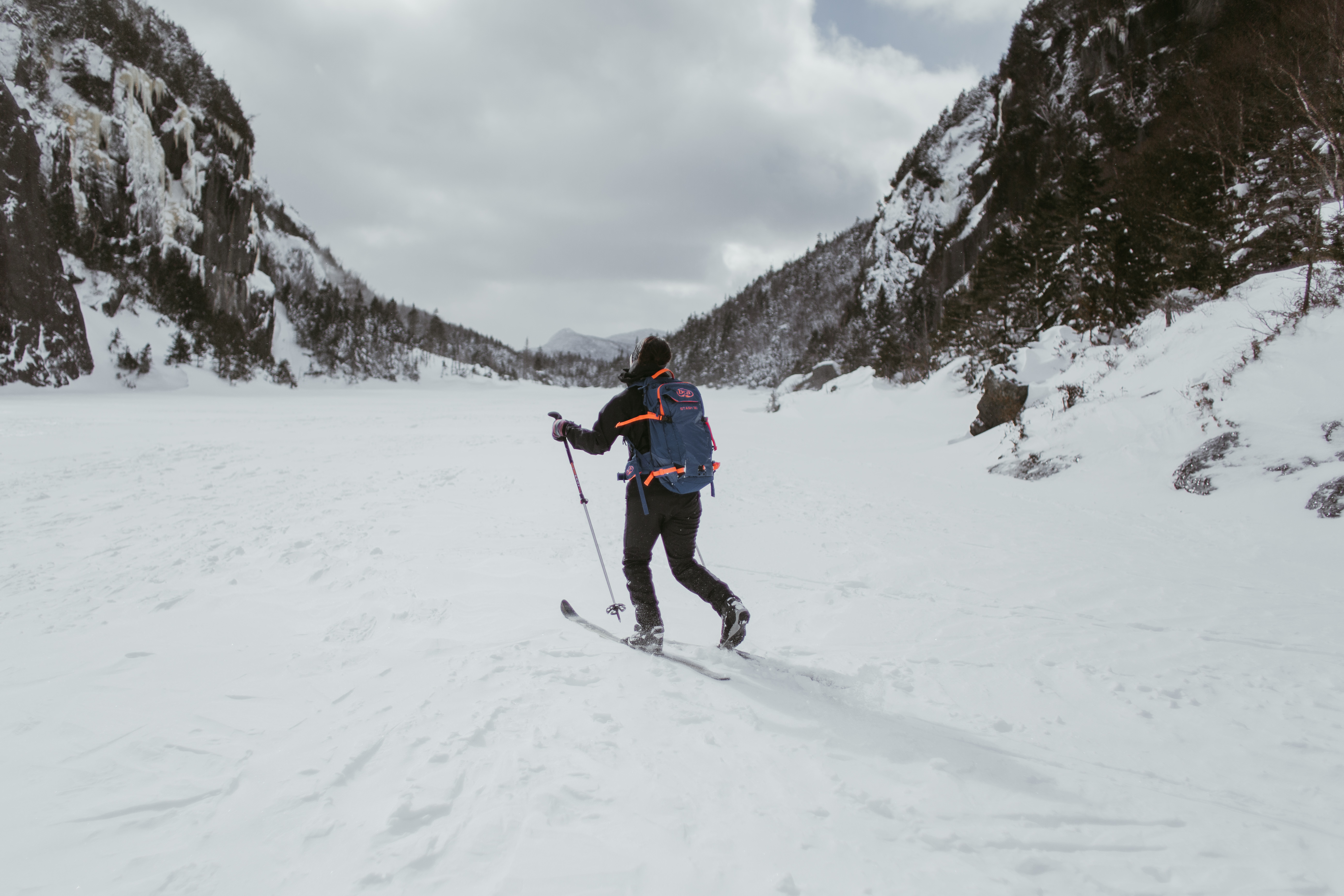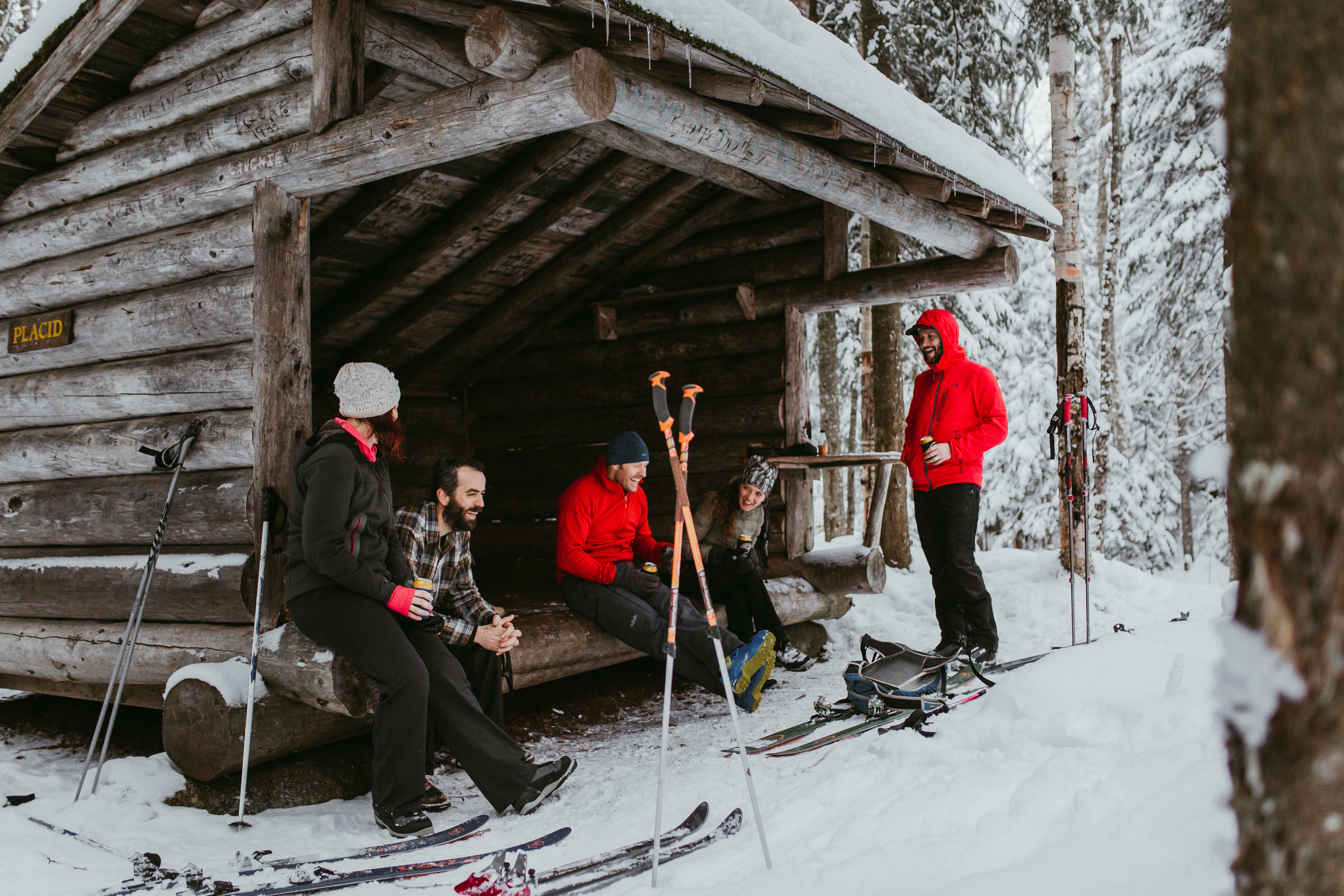
Adirondack Winter Trail Etiquette and Safety
This year has been unlike any other. Our Forest Rangers, Stewards and backcountry staff have been overworked as more and more people seek the solitude and experience Adirondack wilderness provides. There are not enough rangers and staff to respond to the record number of calls for help this year. We all need to do our part to make sure we are self-sufficient and safe in the backcountry as the COVID-19 pandemic continues, to protect rescue personnel and Adirondack communities.
Adirondack Backcountry Conditions
Before you head out on any winter adventure, make sure to plan ahead and prepare. Check the backcountry conditions from the Department of Environmental Conservation and plan accordingly.
Winter Trail Etiquette and Safety
Not all trails are marked with this information, so it's important to know- traveling on trails suitable for skiing without snowshoes or skis (yes, even in microspikes) is called postholing, and it ruins the conditions for others on the trail and creates unsafe conditions.
 Photo: Jamie West McGiver
Photo: Jamie West McGiver
It’s up to all of us to honor the different types of activity that winter in the Adirondacks offers during the relatively brief time we can hope for good snow. The information below is provided by the Department of Environmental Conservation relative to the High Peaks Region which serves as a guide to good winter trail etiquette on any trail that is suitable for skiing.
Trail Rules & Etiquette:
- Snowshoes or skis are required on all trails in the High Peaks Wilderness and recommended on all trails throughout the region. [Note: microspikes are NOT a replacement for snowshoes or skis!)
- Using snowshoes eases travel on snow and prevents "post holing", which can ruin trails and cause sudden falls resulting in injuries.
- Snowshoers and hikers should avoid walking on cross-country ski tracks wherever possible and are prohibited on designated ski trails.
- Trail crampons should be carried for use on icy portions of the trails including summits and other exposed areas.
- Traveling in deep snow takes more energy and time - especially when traveling through freshly fallen snow - plan accordingly.
Leave No Trace
In addition to good trail etiquette, it’s especially important in the winter to be well prepared and to follow Leave No Trace principles. This includes carrying and using a face covering when near other hikers, maintaining physical distancing as much as possible, and sanitizing your hands when touching shared surfaces like trail registers.
The Leave No Trace Center for Outdoor Ethics also reminds us, “Winter is an especially vulnerable time for animals. Observe wildlife from a distance. Do not follow or approach them.” and “Stay on deep snow cover whenever possible; in muddy spring conditions, stay on snow or walk in the middle of the trail to avoid creating new trails and damaging trailside plants.”
 Photo: Jamie West McGiver
Photo: Jamie West McGiver
Winter Safety in the Adirondacks
Changing winter conditions can make outdoor recreation in the Adirondacks even more dangerous and even life-threatening. During the COVID-19 pandemic, it is our responsibility to take every step possible so that we do not need to seek help. Weather at the start of a trail can be widely different once you reach higher elevations. Cell phone batteries die more quickly in the cold. The way your body stays warm and hydrated is different in the winter. And what you’ll want to pack in your backpack varies based on conditions.
Read the NYSDEC winter hiking safety page for critical information. On this page, you will find information on what to do if you’re caught in a snow squall, how to prevent frostbite, and how to cross frozen bodies of water.
Our friends at the Adirondack Mountain Club have also provided 5 helpful tips for winter hiking too:
- Bring the right gear and emergency supplies
- Plan your itinerary according to the season
- Wear layers of non-cotton clothing
- Wear proper footwear, snowshoes and carry traction
- Be aware of winter’s unique dangers
Most of all, get out and enjoy it! Winter is a beautiful season in the Adirondacks and offers a wide variety of recreation opportunities that we don’t have year-round. If you’re lucky, you may even see some of these 10 winter wildlife.
 Diane joined the Council staff in 2001 and works with the Board and Staff to raise the financial resources needed to support the Council's conservation and advocacy efforts on behalf of the Park. An important step in this process is keeping in touch with supporters in all 50 states to understand their interests and concerns about the Adirondack Park and to engage members in the Council’s advocacy efforts.
Diane joined the Council staff in 2001 and works with the Board and Staff to raise the financial resources needed to support the Council's conservation and advocacy efforts on behalf of the Park. An important step in this process is keeping in touch with supporters in all 50 states to understand their interests and concerns about the Adirondack Park and to engage members in the Council’s advocacy efforts.
Diane shares other Council supporters' love of the Adirondacks, enjoys the Park's many outdoor recreation activities, and appreciates the astounding beauty of the Park every day.




